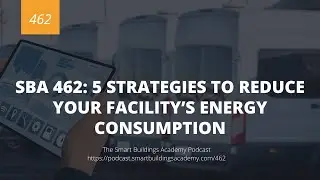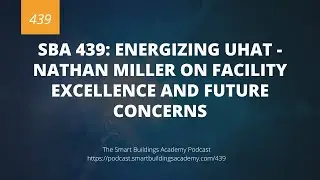SBA 462: 5 Strategies to Reduce Your Facility’s Energy Consumption
In this episode of the Smart Buildings Academy Podcast, Phil Zito discusses five practical strategies to help facility managers reduce their facility's energy consumption. Phil emphasizes the importance of optimizing existing resources and implementing simple changes that can lead to significant energy savings without the need for extensive retraining or costly upgrades. By focusing on these actionable steps, facilities can better manage energy demands and consumption, ultimately contributing to cost savings and sustainability goals.
Key Takeaways:
Optimize Schedules: Adjust building, floor, and space schedules to align with actual occupancy patterns, significantly reducing unnecessary energy usage.
Check Sensor Calibration: Regularly verify the calibration of sensors, especially those related to temperature and air quality, to ensure accurate system responses and prevent energy waste.
Verify Damper and Valve Operations: Ensure that dampers and valves are functioning correctly by conducting regular checks during preventive maintenance, helping systems operate efficiently.
Verify Set Points: Document and regularly review temperature set points, especially after commissioning or retrofitting, to prevent inadvertent changes that could lead to increased energy consumption.
Implement Night Setback: Utilize night setback strategies to widen temperature set points during unoccupied periods, allowing for energy savings while maintaining suitable conditions for space recovery.































